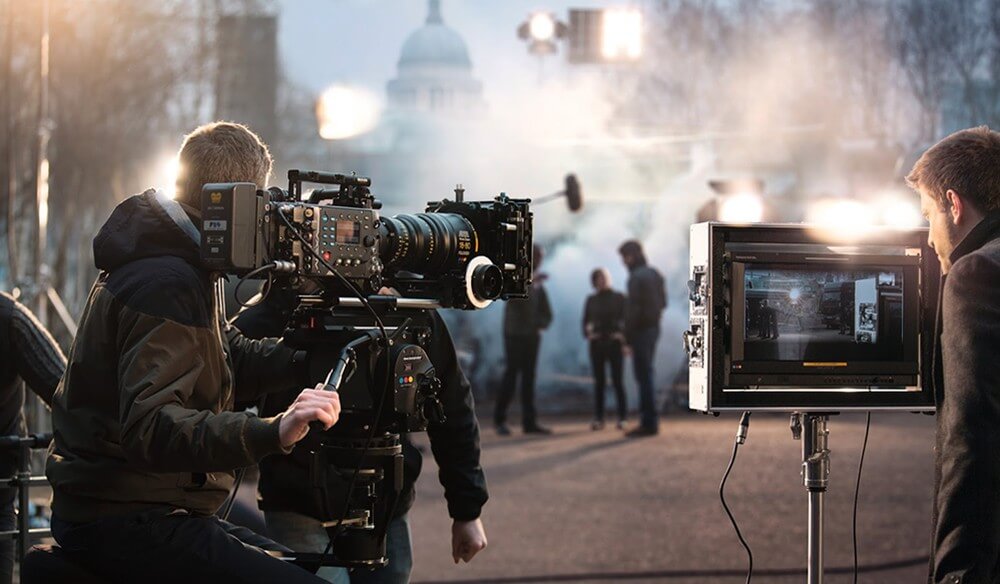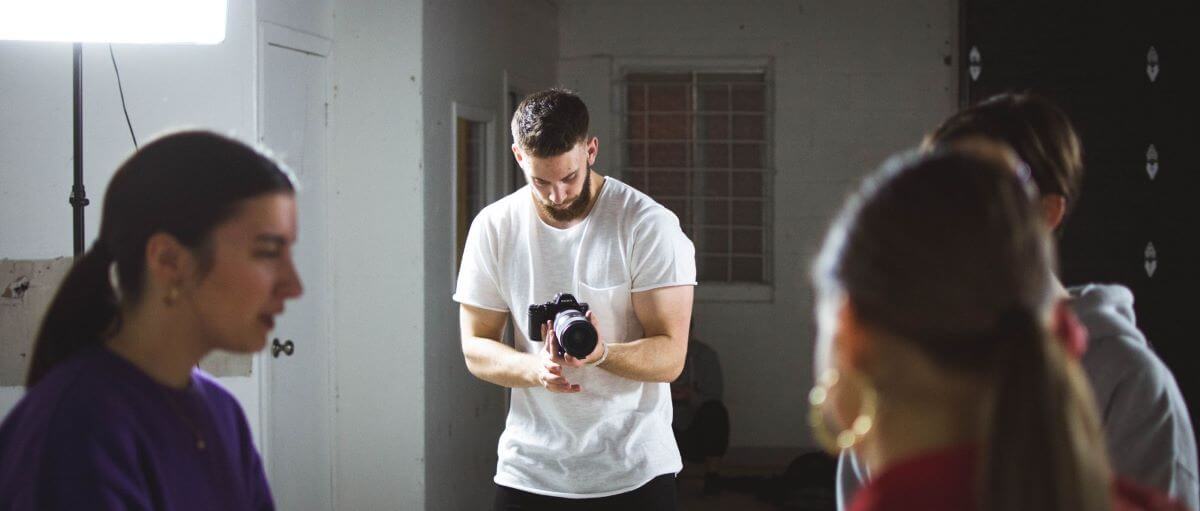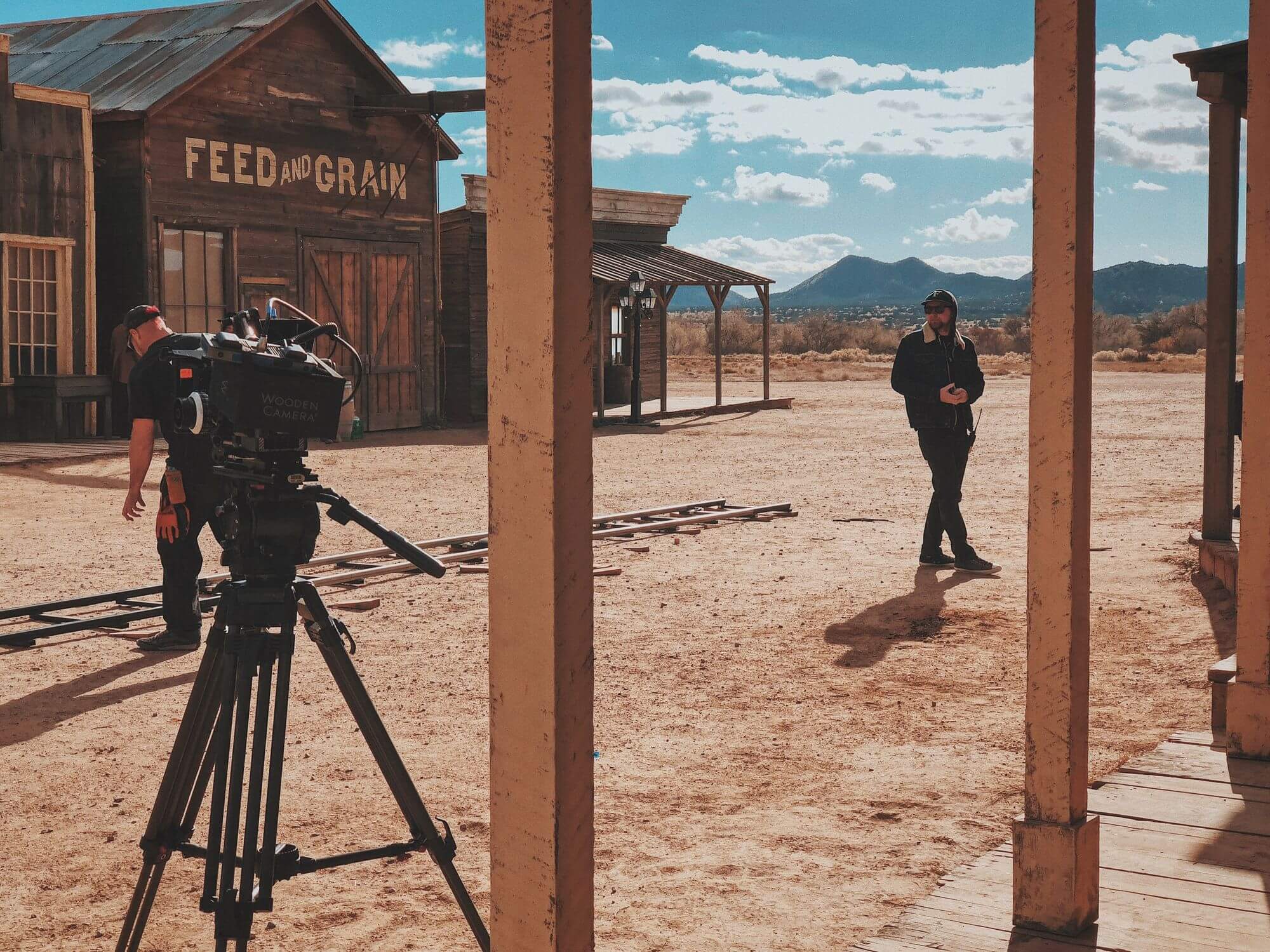Making movies is expensive, with average film budgets running between $1 million for a modest, low-budget project and hundreds of millions for a typical Hollywood blockbuster.
No matter how much cash you and your team have to spend, however, it always makes sense to try to cut costs on your next film production without taking a hit on the quality side, of course.
Here’s a list of nine cost-cutting strategies for film production that can do exactly that. Let’s dive in.
9 Strategies to Reduce Film Production Costs
Get The Most Efficient Large File Transfer
Get MASV and stop wasting time with complicated file transfer.
9 Strategies to Reduce Film Production Costs
From setting a film production budget to choosing budget-conscious actors and locations, filmmakers can reduce film production costs in plenty of ways. Here are some of the most effective ways to do it.
1. Set a Film Production Budget
Create a realistic video production budget proposal during the pre-production process and stick to it. Begin with a broad preliminary budget that includes estimated costs, which will help when trying to obtain financing for the project.
While the preliminary budget doesn’t need to be very detailed, remember to keep all elements in mind, including (but not limited to):
- Cast
- Locations
- Props
- Scripts
- Travel
Once you’ve obtained financing, it’s time to create more detailed budgets that correspond with each phase of the filmmaking process: Pre-production, production, and post-production.
These budgets should take into account “above-the-line” (mostly pre-production personnel and activities) and “below-the-line” costs (production and post-production personnel and activities).
Keep the following elements in mind when drawing up your budgets:
- Pre-production: Rehearsals, preparation, scouting, production design, etc.
- Production: Equipment, production design, costumes, hair/makeup, locations, shooting schedule, etc.
- Post-production: Video editing, sound mixing, visual effects (VFX), color, etc.
Once these budgets are in place, you can start asking the tough questions before the shooting starts. For example, do you really need a top-tier VFX artist with a high hourly rate? Can you find an editor who is also a colorist? Etc.
Many filmmakers use budgeting software, such as Movie Magic, for budget templates and tools such as deep cost analysis and budget comparisons across locations.
💡 Read More: How To Protect Your Film & TV Production Company
Get The Best Large File Transfer
Sign up today and start using MASV’s fast, reliable large file transfer.
2. Plan in Advance
Planning your project goes hand-in-hand with budgeting and is one of the most effective ways to lower production costs.
Indeed, one of the most effective strategies to cut costs on film production is to plan your pre-production activities. No one benefits from having scriptwriting or concept development drag on for weeks longer than everyone expected, which can make video production costs skyrocket.
Contingency planning is also important for what to do if the weather is bad or an actor no-shows. Have a plan to guide you through difficult (yet necessary) calls during production, such as pushing back on an ambitious director who really, really, really wants to get that perfect shot.
It’s OK to have difficult conversations if it helps the overall project.
The director’s next task is to implement a shooting or production schedule, either in list or spreadsheet format, to keep your film shoot organized while also optimizing costs. But to do that, an in-depth script analysis is first required.
💡 Read More: 5 Side Hustles for Video Production Professionals
3. Analyze the Script
Of all the various strategies to reduce film production costs, a huge part of your advance planning will be spent analyzing the script to find optimizations. Does the script contain super expensive scenes that aren’t really necessary? Are there locations you can use that aren’t as extravagant or expensive, yet convey the same meaning or feeling?
By deeply analyzing the script and determining how many pages you can realistically shoot per day, you can accurately plan your total number of production days — which helps when preparing your production budget.
This planning helps you understand how much you’ll need to spend getting to locations or renting props. It helps when shooting multiple scenes at one location (so you’re not traveling back and forth). And it brings a level of sanity to your production phase by meticulously spelling out the order in which you’ll shoot the scenes and which personnel and equipment are required for each day.

Source: PremiumBeat
But maybe the most profound benefit of a shooting schedule is the clarity it can bring to the planning process. When viewing shoots on paper, it’s easier to assign exactly the right number of crew for each shooting day, instead of having a dozen unneeded cast and crew milling about (and getting paid) on set for no reason.
You can use your shooting schedule to simplify your shot list. For example, adding storyboarding in the pre-production process can help crystallize in your mind which shots you’ll need, and which are extraneous. Paring your shot list down to what’s needed and limiting the amount of b-roll you film can greatly impact the bottom line.
Additionally, examine your cast size to weed out unnecessary chaff (more on this in the next section). Using the right camera angles can help when filming crowds, allowing you to get away with smaller groups of extras. And in many cases, just one minor character in a given scene is sufficient — no need for several different characters unless they truly advance the story.
Film production teams can also use generative AI such as ChatGPT to produce a rough first draft, or quickly summarize the script for prospective investors and other interested parties. While generative AI won’t replace scriptwriters and other creatives, it can certainly reduce the time spent during the creative process.
💡 Read More: AI tools for Filmmaking You Need to Know About
Transfer Massive Files Without Blowing Your Budget
Get MASV and stop wasting billable hours waiting for file downloads or troubleshooting.
4. Analyze Your Actors
Most filmmakers can’t even dream about hiring A-listers for their projects, but even if you have Brad Pitt’s mobile number in your contacts list, calling him isn’t always necessary — or even advisable.
That’s because while stars may get the attention of fans and the media, it has been shown time and time again that top-tier and award-winning films don’t need top Hollywood actors, who command a level of remuneration that isn’t in the same stratosphere as up-and-comers. That money can then go toward other elements of the filmmaking process.
Additionally, make sure everyone parks their ego at the door. Nothing puts a project in the ditch faster than an actor who thinks they are bigger than the project and shows up late or not at all.

With that last point in mind, don’t dismiss the value of rehearsals. Rehearsals can cut down on time spent doing multiple takes (and all the crew costs that entails), ensuring your shoots go smoothly and (most importantly) quickly.
5. Scout Locations Carefully
Assuming you’re not producing your entire project using virtual production, it’s imperative to choose your locations wisely. Every location must add value. Otherwise, it’s a needless expense — and some locations (especially these days) can be very expensive to get to.
Be sure to scout the location thoroughly before production starts so there are no last-minute surprises, and everyone arrives well prepared, from the actors to the crew.

As mentioned earlier, always plan your shooting so you’re doing multiple scenes at one location (if the script calls for it) before moving on to the next. If you can select one primary shooting location and tailor its look and feel to appear to be other places, then even better.
But maybe the most important thing about location scouting is to weigh the cost of shooting in Location A vs. Location B. Shooting in the U.S., for example, can be quite expensive — which is why so many films choose to shoot in places such as Canada or New Zealand, which have cheaper labor costs and favorable exchange rates.
6. Go Green to Save Money
Limiting energy use and employing other sustainable techniques on set and in the studio can also help stretch your budget. This includes:
- Sourcing renewable energy in your production office building.
- Replacing all lighting with LED.
- Using smart sensors to control lighting and HVAC.
- Using low-carbon fuels for generators.
- Utilizing solar-powered trailers.
- Replacing single-use plastics with water dispensers/coolers.
Other ways of saving money through green initiatives can include cutting down on on-location shoots (and related travel), which can be a significant line item on any film production budget. Planning in advance can help cut down on unnecessary trips, and video conferencing tools can help reduce travel for in-person meetings.
Similarly, using a cloud-based large file transfer tool like MASV instead of shipping a bunch of hard drives is better for the environment and more cost-effective.
Never Ship Another Hard Drive
Secure, reliable, and fast digital transfer of massive video files with MASV.
7. Equipment and Crew
Another way to optimize costs is to look hard at your equipment and crew members. It’s possible (probably likely) your project doesn’t need an IMAX camera worth a half-million dollars to purchase (and five figures per week to rent).
Indeed, some well-received films are fully shot on an iPhone.

Source: Wired
Either way, plenty of good cameras out there produce 4K or higher resolutions that you can rent for reasonable prices. Always be sure to rent your equipment for the days you’ll need it, and nothing more. Some filmmakers also hit up broadcast, film, and audio equipment auctions for better prices.
It can pay off to take a similarly frugal look at your crew (where it makes sense). Hiring local crew members to do the job of more expensive professionals you need to fly into various locations can make a lot of sense.
Even Game of Thrones, which cost around $15 million per episode, used a local wardrobe supplier in Northern Ireland instead of a big-name organization.
8. Post-Production
Just like the pre-production and production phases, plan post-production activities such as editing, revisions, VFX, and color grading in advance to avoid costly revisions and delays. Include details of all these activities in your project budget to ensure they fit within your scope.
Including post activities in the budget helps keep a lid on last-minute requests that could blow up costs. Here are some other ways to conserve cash on post-production.
Go virtual
Using virtualization can also help cut costs by eliminating the need to purchase or rent high-performance GPU machines, allowing you to spin virtual workstations up and down as needed.
Take advantage of free tools and templates
Additionally, you can use inexpensive post-production tools to reduce your film post-production costs. Affordable or even free video editing software — such as the free version of DaVinci Resolve or Hitfilm — do a decent job if you’re up against cash constraints.
And there are plenty of free form templates out there for filmmakers, including those for logging sheets, ADR forms, and film synchronization agreements, meaning you don’t have to reinvent the wheel when drawing up agreements or creating forms.
You can also take advantage of free VFX templates to help scale your post-production activities and get things done faster.
Don’t forget sound
Finally, composing and producing original music for your film is another expense that can quickly get out of hand. Hiring local musicians and composers is one way to acquire original music without breaking the bank, or you can rely on pre-produced, royalty-free tunes. There are also plenty of websites, such as Beatoven.ai, that offer mood-based, AI-produced, royalty-free music for videos, podcasts, and other creative endeavors.
You’ll also need to have all your sound mixed and mastered, so be sure to budget for all of this in advance.
9. File Transfer & Cloud Storage
No film project is complete without file transfer. How else will you get various clips and cuts to partners, collaborators, and clients?
It has become even more important in the age of massive video files that seem to grow by the day and an environment where shipping hard drives by courier is just not practical, secure, or cost effective. Sending a one-off drive may not seem like much, but shipping multiple drives to different cities and countries for every project adds up quickly.

Digital file transfer can also be expensive, especially when slow and overly complex platforms are involved. There’s nothing worse than bleeding billable hours while your people sit and wait for files to download or spend hours troubleshooting the latest firewall issue.
Faster file transfer results in faster turnaround time, which in turn results in fewer resource hours spent (and less cost to you).
But which platform to choose?
The most cost-efficient option is to choose a file transfer solution that allows easy collaboration between different teams and integrates smoothly with whichever cloud storage and asset management platforms you prefer. That way, you spend less resourcing time on training and more time sending critical files.
And wouldn’t you know it – MASV accomplishes all these things while also being the fastest, most reliable, and secure large file transfer solution in existence.
Don’t Spend a Fortune on File Transfer
Sign up with MASV and start sending files within minutes with no expensive up-front fees.
MASV: File Transfer for Cost-Conscious Projects
It is possible to cut costs in a film production without compromising the quality. These include:
- Setting a realistic budget
- Planning in advance
- Analyzing the script and actors
- Scouting locations carefully
- Going green
- Optimizing equipment and crew
- Planning post-production activities
- Using a cost-effective file transfer solution like MASV
Filmmakers and video professionals can use MASV to easily send up to 15 TB per file anywhere in the world with an internet connection, taking advantage of MASV’s global-scale file acceleration technology. That means it will take less time to get files where they need to go, reducing your overall spend.

MASV also offers zero-friction integrations with affordable cloud storage providers such as Wasabi, which offers pay-as-you-go cloud storage at an astoundingly affordable cost (with no egress or API fees).
And MASV’s pricing is light years more affordable than similar enterprise services from Signiant or Aspera.
So sign-up for free today and see for yourself. We’re excited for you to discover how our large file transfer service can help you cut costs on film production.
Scale Your Team With MASV
MASV’s simple user interface, speed, and reliability help you spend more time on film production and less time on file transfer.